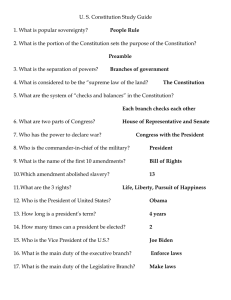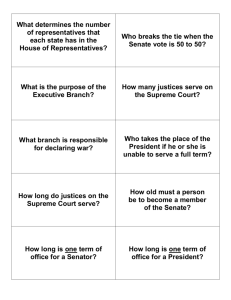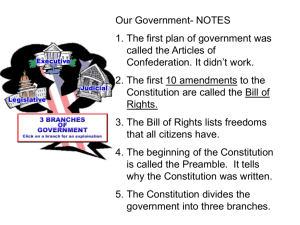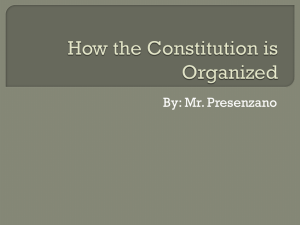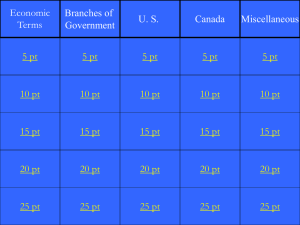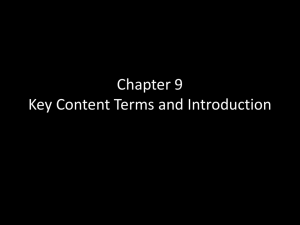File
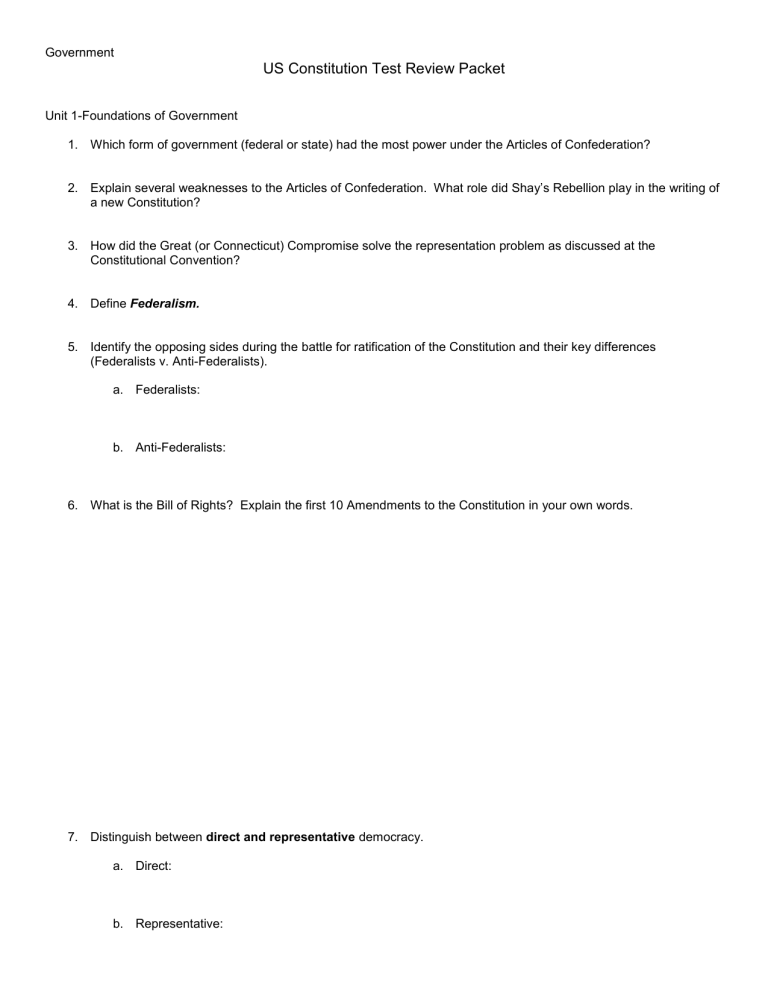
Government
US Constitution Test Review Packet
Unit 1-Foundations of Government
1. Which form of government (federal or state) had the most power under the Articles of Confederation?
2. Explain several weaknesses to the Articles of Confederation. What role did Shay’s Rebellion play in the writing of a new Constitution?
3. How did the Great (or Connecticut) Compromise solve the representation problem as discussed at the
Constitutional Convention?
4. Define Federalism.
5. Identify the opposing sides during the battle for ratification of the Constitution and their key differences
(Federalists v. Anti-Federalists). a. Federalists: b. Anti-Federalists:
6. What is the Bill of Rights? Explain the first 10 Amendments to the Constitution in your own words.
7. Distinguish between direct and representative democracy. a. Direct: b. Representative:
8. Define in detail the six basic principles of the Constitution (Chapter 3 Section 1). a. b. c. d. e. f.
9. Know the four methods for formal amendment to the Constitution (two proposal options and two ratification options).
Proposal Methods
1. 1.
2. 2.
Unit 2-Interest Groups and Political Parties
10. Where in the Constitution are political parties discussed?
11. Define the following terms: a. liberal b. conservative c. moderate
Ratification Methods
12. Describe the many ways that Americans develop their political values.
13. What are the distinguishing differences between political parties and interest groups ?
Political Parties Interest Groups
14. Explain the relationship between socioeconomic status and political participation.
15. List and explain the five functions of political parties. a. b. c. d. e.
16. What is a party platform?
17. Describe voter turnout trends in America. How many people participate? What groups of people typically participate?
18. What group is in charge of electing members of the House of Representatives and the US Senate? What amendment changed this?
Unit 3-Legislative Branch
19. Define expressed powers.
20. List and explain each of the 13 expressed powers of Congress. You must understand what each of these powers allows Congress to do. a. b. c. d. e. f. g. h. i. j. k. l. m.
21. On what basis are seats in the House of Representatives distributed among the states?
22. What is bicameralism ?
23. What is reapportionment , how often is it done, and what is it based on?
24. What is redistricting ?
25. What is gerrymandering ?
26. How many Representatives is the House composed of? ___________________
27. What are the qualifications for members of the House of Representatives? a. b. c.
28. What is the term of office for members of the House of Representatives? __________ years
29. What is the term of office for U.S. Senators? __________ years
30. What are the qualifications for U.S. Senators? a. b. c.
31. What is the role of the House of Representatives during the impeachment proceedings?
32. What is the role of the Senate with regards to impeachment?
33. Who serves as the president of the Senate?
34. What is the Elastic Clause and how does it affect Congress’ job?
35. What is the significance of pork barrel spending?
36. What is a filibuster and what is its purpose?
37. What is the cloture rule and what is it used for?
38. How may a presidential veto be overridden?
Unit 4 – Executive Branch
39. Summarize the President’s powers and responsibilities as…
Chief Executive
Presidential Roles
Head of State Chief Diplomat
Chief Legislator Commander-in-Chief Chief of Party
40. What is the Electoral College ?
41. How many electoral votes does each state have? __________________
42. How many total electoral votes are there? _________________
43. How many does Illinois currently have? _______________
44. How many electoral votes are needed to become president? _______________ What percent? _____________
45. How long is a single presidential term? _________ How many terms is the President limited to?________What amendment makes this so?________
46. Define each.
Veto
Override:
Chief Legislator
Pocket Veto
Override???
“Do Nothing”
47. What is the Cabinet?
48. List the 3 formal requirements to be President of the United States. a. b. c.
49. List the first FOUR officers in the order of presidential succession. a. b. c. d.
Unit 5-Judicial Branch
50. How many justices serve on the Supreme Court?________
51. According to the Constitution, what formal requirements need to be met to be a Supreme Court justice?
52. Define judicial review.
53. How can a Supreme Court decision be changed (two ways)? a. b.
54. Summarize the significance of the following Supreme Court cases: a. McCulloch v. Maryland
b. Plessy v. Ferguson c. Schenck v. United States d. Tinker v. Des Moines e. Mapp v. Ohio f. Miranda v. Arizona g. Gideon v. Wainwright h. Roe v. Wade i. Brown v. Board of Education
55.
Know your Checks and Balances!!!!!!!
Congress’ Checks over the President
President’s Checks over Congress
Court’s Checks over Congress
Congress’ Checks over the Courts:
President’s Checks over the Courts
Court’s Checks over the President
